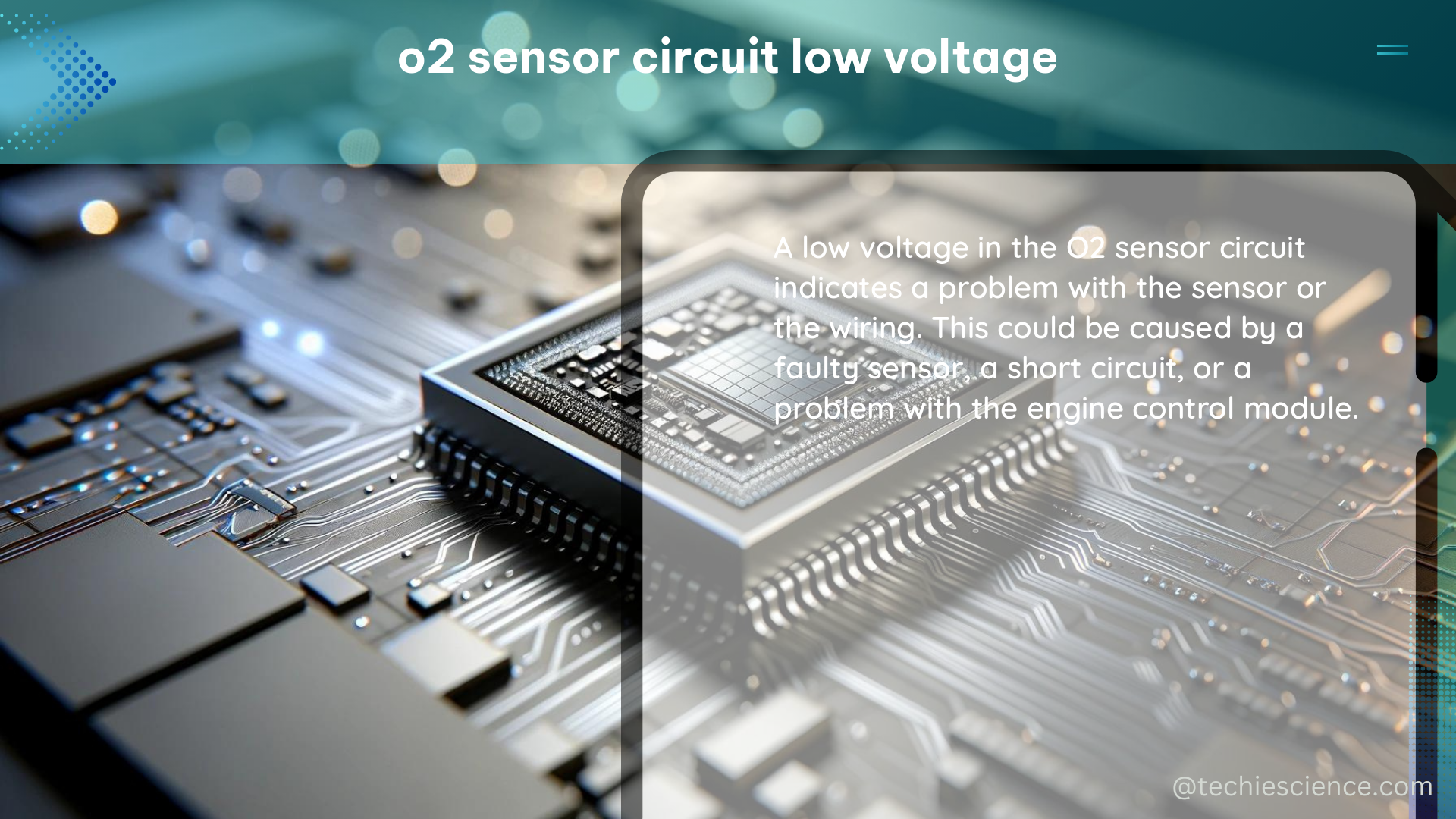The oxygen (O2) sensor is a critical component in the engine management system, responsible for monitoring the air-fuel ratio and providing feedback to the powertrain control module (PCM). When the O2 sensor circuit experiences low voltage, it can trigger diagnostic trouble codes (DTCs) such as P0131 and P0137, indicating a problem that requires immediate attention.
Understanding O2 Sensor Voltage Ranges
A conventional oxygen sensor can produce a voltage between 0 and 1 volt (0 to 1000 millivolts, mV), but it typically operates within a range of 200 mV and 900 mV. The voltage output of the O2 sensor is directly related to the air-fuel ratio in the exhaust stream.
Upstream O2 Sensor Voltage Range
The upstream (or front) O2 sensor, located before the catalytic converter, should constantly switch its voltage output above and below 0.5 volts (500 mV). This switching pattern indicates that the engine is operating in a closed-loop fuel control mode, adjusting the air-fuel ratio to maintain stoichiometric combustion (14.7:1 ratio of air to fuel).
Downstream O2 Sensor Voltage Range
The downstream (or rear) O2 sensor, located after the catalytic converter, should drift lazily, usually remaining above 0.5 volts (500 mV). This sensor is primarily used to monitor the efficiency of the catalytic converter and provide feedback to the PCM for further adjustments.
Diagnosing O2 Sensor Circuit Low Voltage

When the PCM detects a voltage below a specified threshold in the O2 sensor circuit, it will set a DTC such as P0131 (O2 Sensor Circuit Low Voltage – Bank 1, Sensor 1) or P0137 (O2 Sensor Circuit Low Voltage – Bank 1, Sensor 2). These codes indicate that the voltage from the O2 sensor has dropped below the acceptable range, which can be caused by several factors.
Common Causes of O2 Sensor Circuit Low Voltage
- Malfunctioning O2 Sensor: The O2 sensor itself may be faulty, causing it to produce a low voltage output.
- Lean Running Condition: A lean air-fuel ratio, where there is too much air and not enough fuel, can result in low O2 sensor voltage.
- O2 Sensor Circuit Problem: Issues with the wiring, connectors, or ground connections in the O2 sensor circuit can lead to low voltage.
- Exhaust Leak: A leak in the exhaust system can disrupt the air-fuel ratio, leading to low O2 sensor voltage.
- Outdated PCM Software: Outdated or incorrect PCM software can sometimes cause issues with O2 sensor voltage readings.
Diagnostic Procedure
- Visual Inspection: Check the O2 sensor, wiring, and connectors for any signs of damage, corrosion, or loose connections.
- Voltage Measurement: Use a digital multimeter to measure the voltage output of the O2 sensor while the engine is running. The voltage should be within the expected range of 200 mV to 900 mV, with the upstream sensor constantly switching above and below 500 mV, and the downstream sensor drifting lazily above 500 mV.
- Lean Condition Diagnosis: Perform a fuel system diagnosis to check for any issues that could be causing a lean running condition, such as a faulty fuel injector, fuel pump, or air intake system problem.
- Circuit Integrity Test: Check the continuity and resistance of the O2 sensor circuit, including the wiring, connectors, and ground connections, to identify any potential issues.
- PCM Software Update: If the above tests do not reveal any obvious problems, consider updating the PCM software to the latest version, as outdated software can sometimes cause O2 sensor-related issues.
Resolving O2 Sensor Circuit Low Voltage Issues
Once the root cause of the low voltage issue has been identified, the appropriate repair or replacement can be performed to restore the O2 sensor circuit to proper operation.
Replacement of Faulty O2 Sensor
If the O2 sensor is found to be malfunctioning, it should be replaced with a new, OEM-approved sensor. Ensure that the replacement sensor is compatible with the vehicle’s make, model, and year.
Addressing Lean Running Condition
If the low voltage is caused by a lean running condition, the issue must be addressed by identifying and resolving the underlying problem, such as a faulty fuel injector, fuel pump, or air intake system issue.
Repairing O2 Sensor Circuit Problems
In the case of wiring, connector, or ground issues in the O2 sensor circuit, the affected components should be repaired or replaced as necessary to restore proper voltage readings.
Updating PCM Software
If the low voltage issue persists despite the above repairs, updating the PCM software to the latest version may resolve the problem, as outdated software can sometimes cause O2 sensor-related problems.
Conclusion
Diagnosing and resolving O2 sensor circuit low voltage issues requires a systematic approach, focusing on understanding the expected voltage ranges, identifying the root cause, and implementing the appropriate repair or replacement. By following the steps outlined in this comprehensive guide, you can effectively address these problems and restore your vehicle’s engine management system to optimal performance.
References:
- P0131 – O2 Sensor Circuit Low Voltage (Bank 1, Sensor 1)
- P0137 – O2 Sensor Circuit Low Voltage (Bank 1, Sensor 2)
- P0131 – O2 Sensor Circuit Low Voltage (Bank 1, Sensor 1)
- Understanding Oxygen Sensors to Diagnose Fault Codes
- Oxygen Sensor Voltage Explained

The lambdageeks.com Core SME Team is a group of experienced subject matter experts from diverse scientific and technical fields including Physics, Chemistry, Technology,Electronics & Electrical Engineering, Automotive, Mechanical Engineering. Our team collaborates to create high-quality, well-researched articles on a wide range of science and technology topics for the lambdageeks.com website.
All Our Senior SME are having more than 7 Years of experience in the respective fields . They are either Working Industry Professionals or assocaited With different Universities. Refer Our Authors Page to get to know About our Core SMEs.